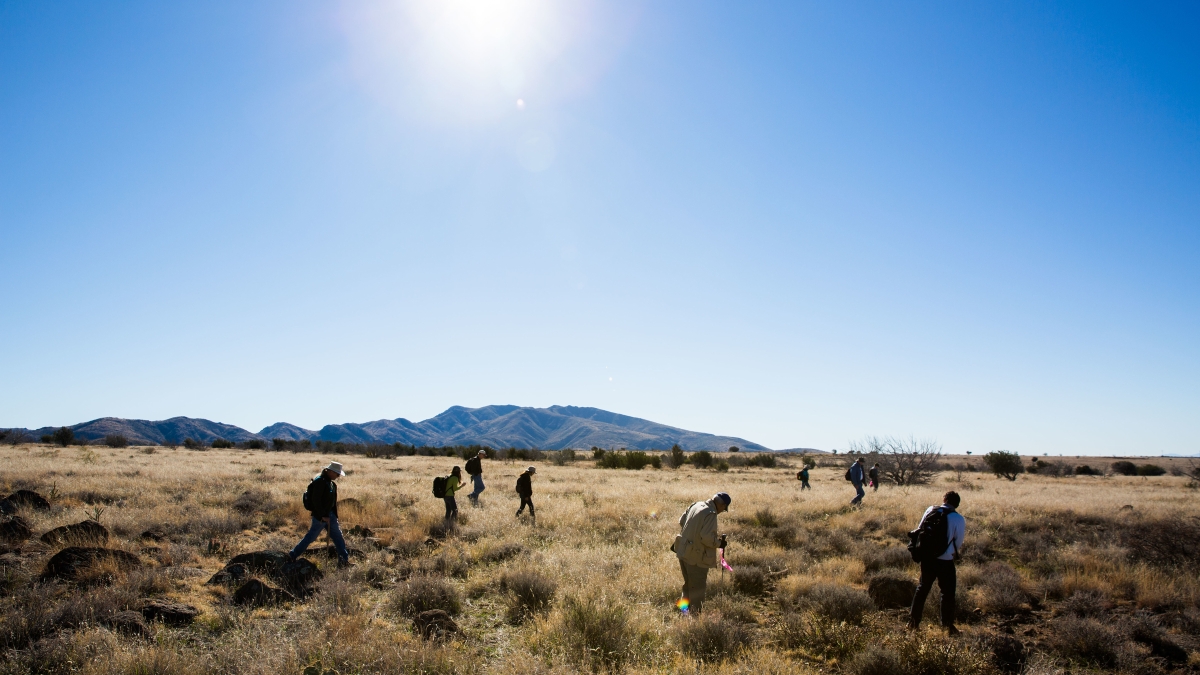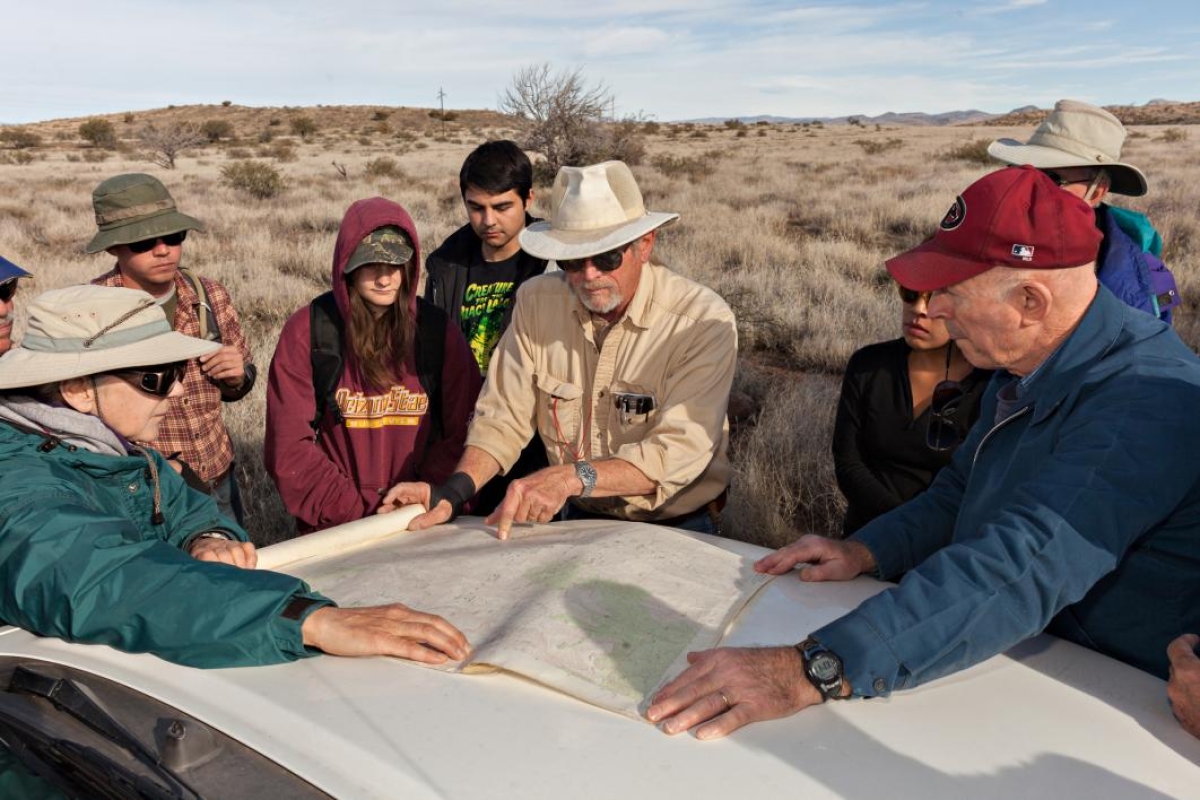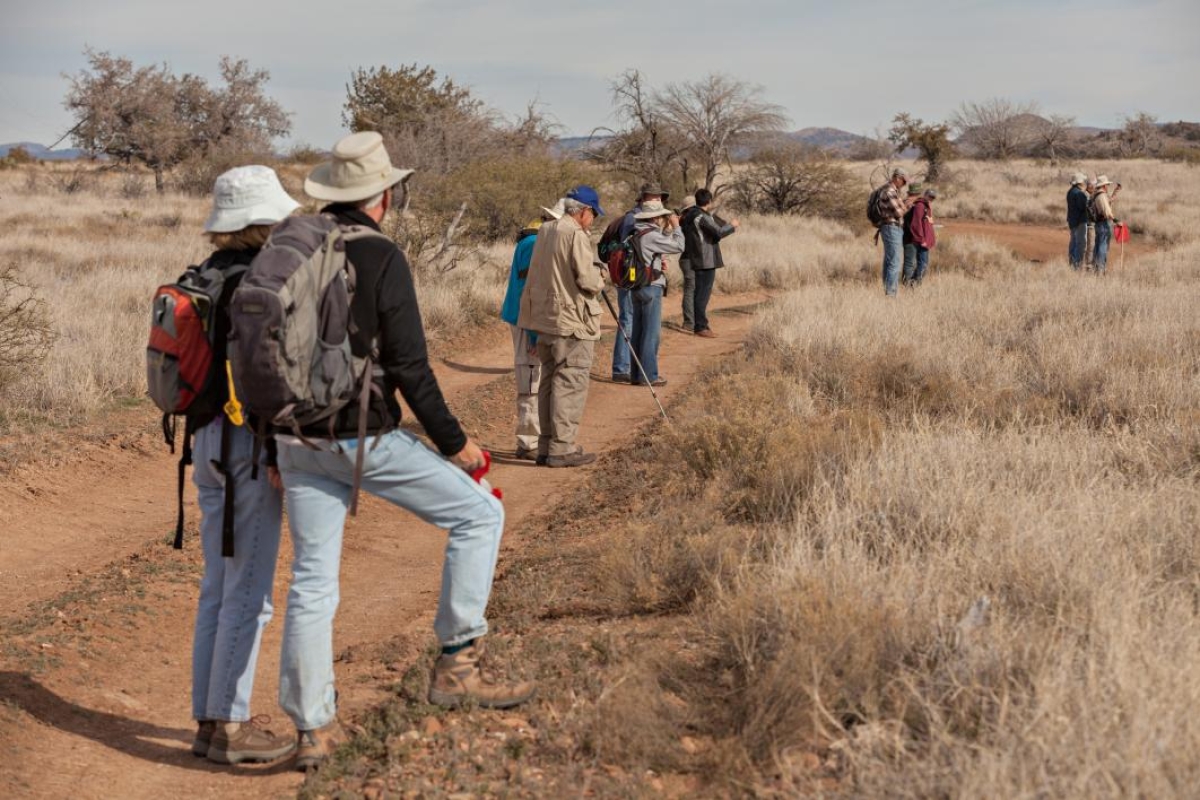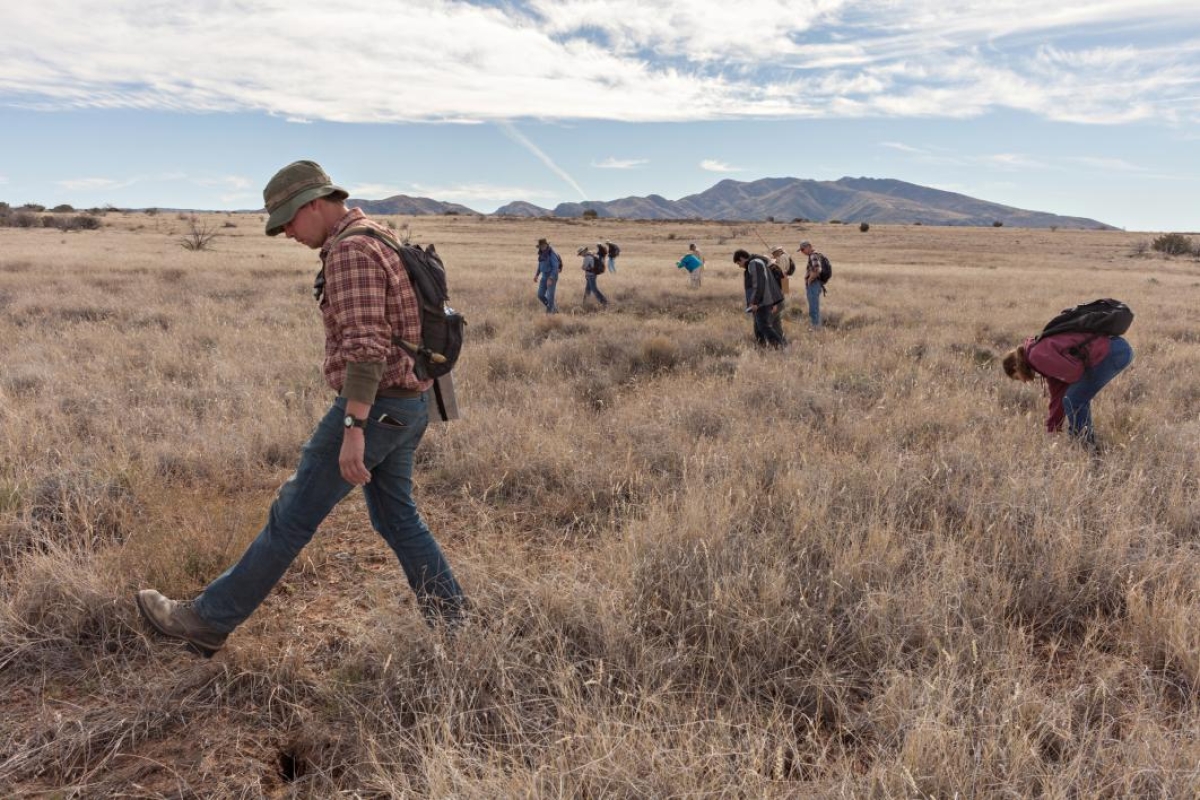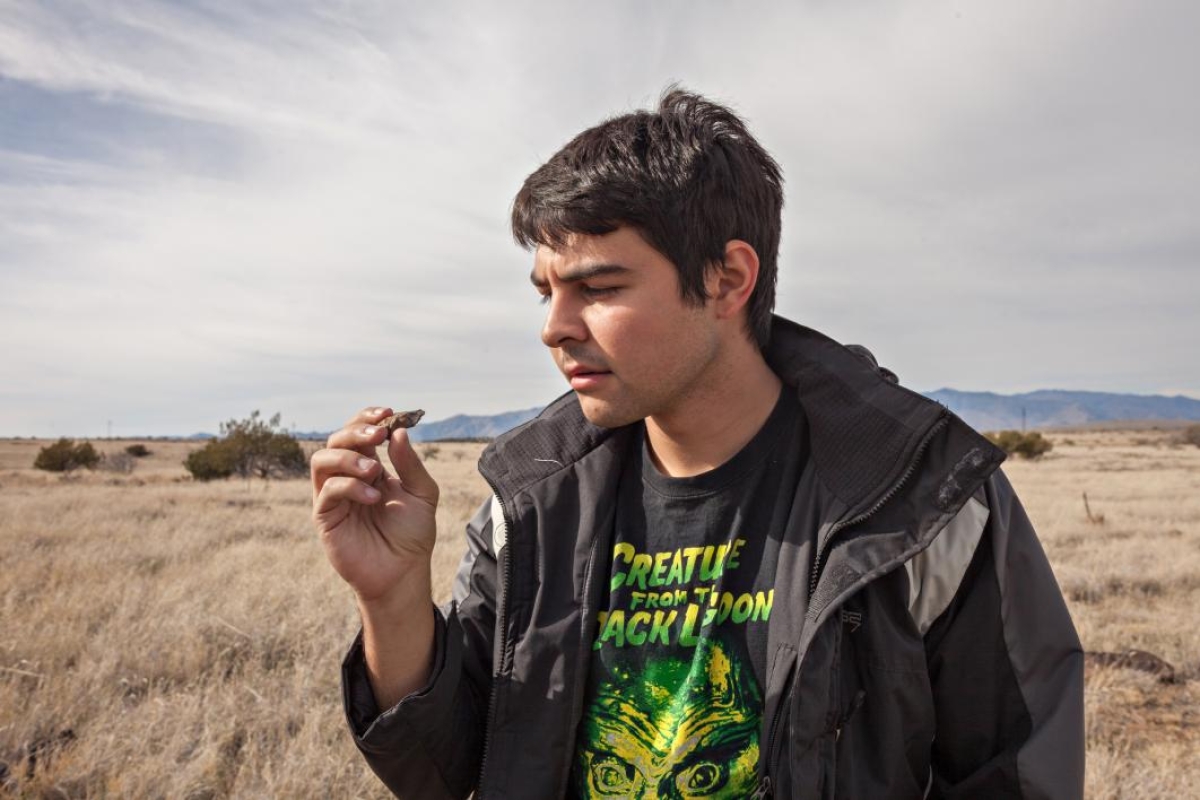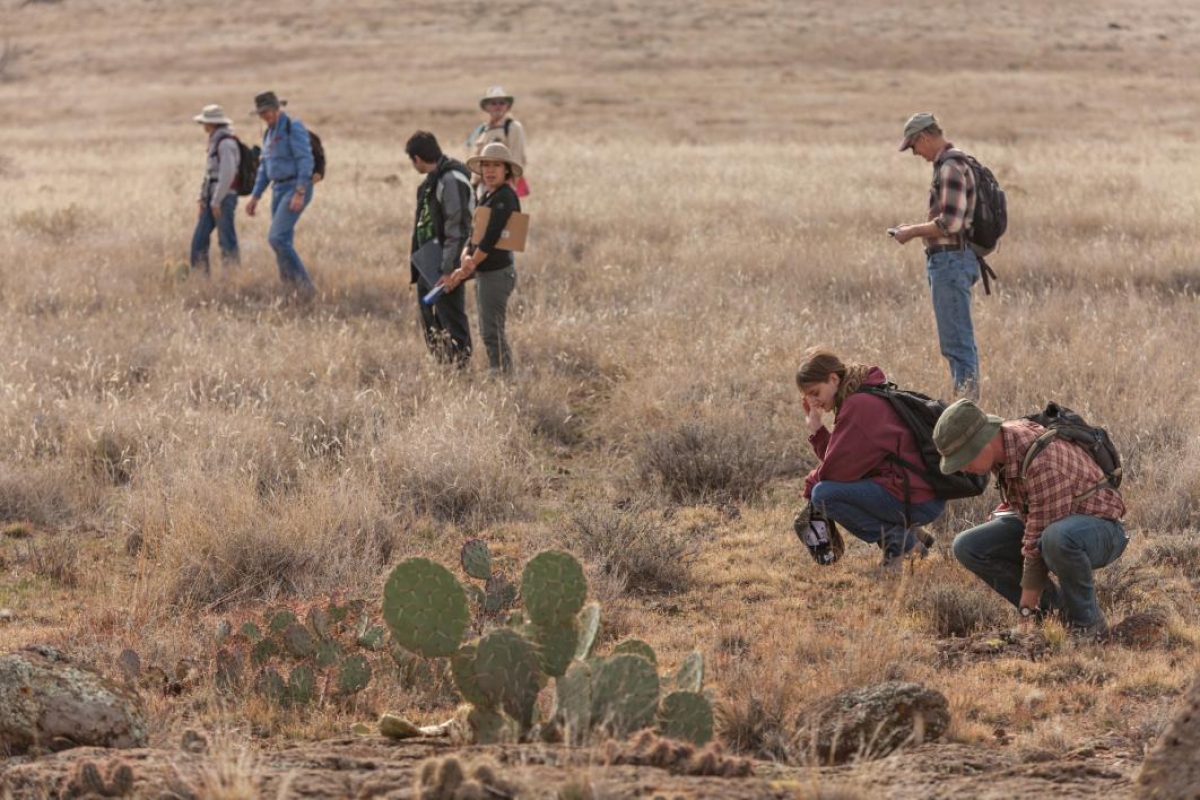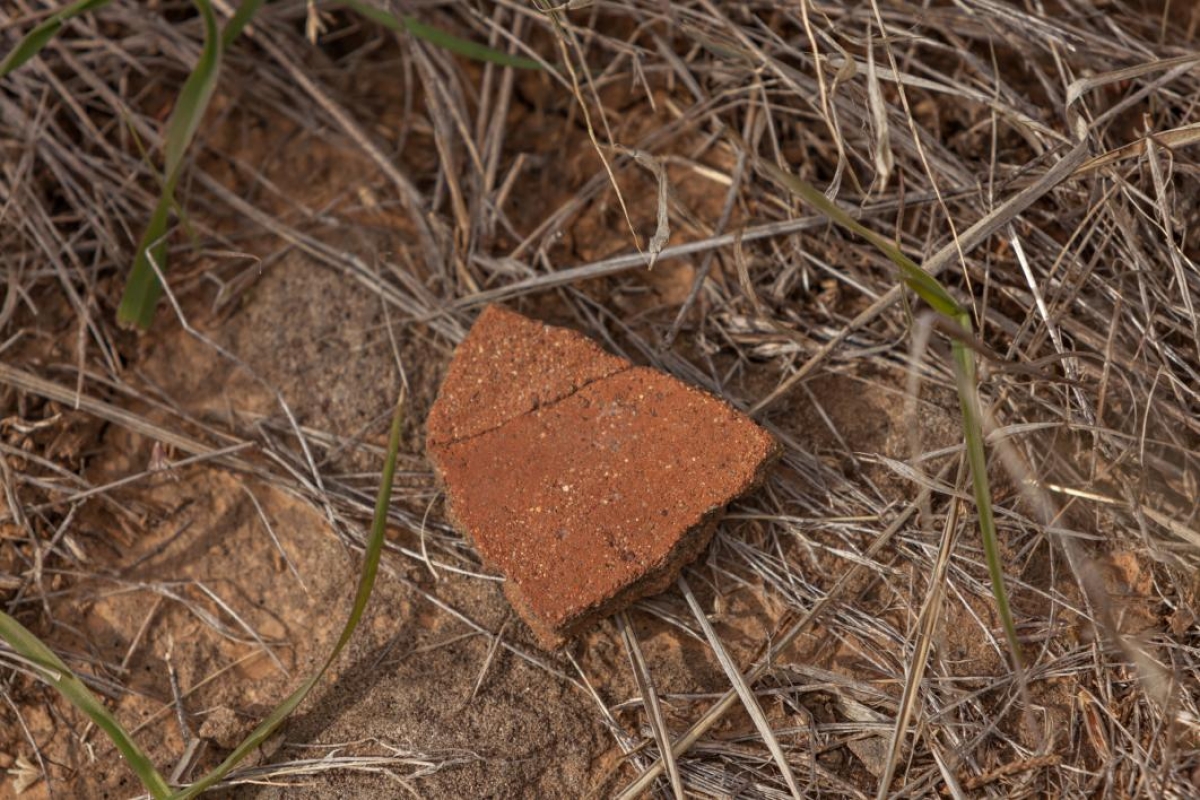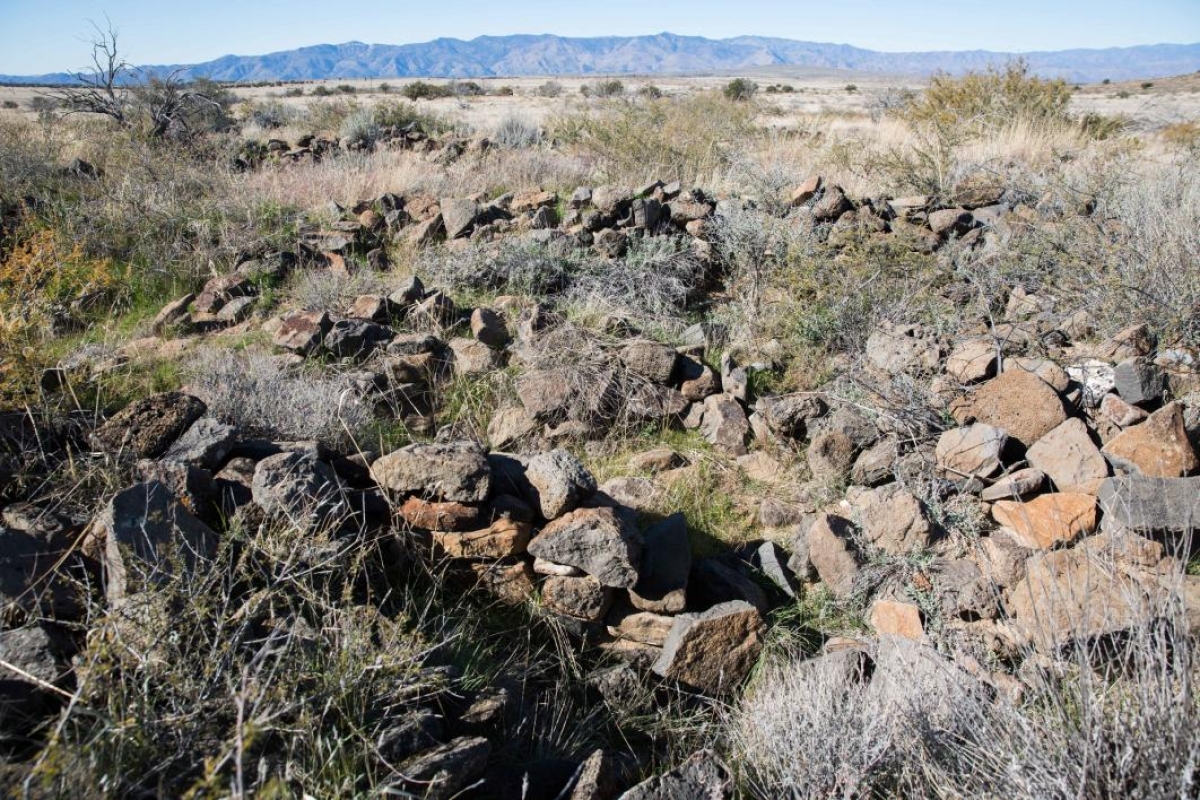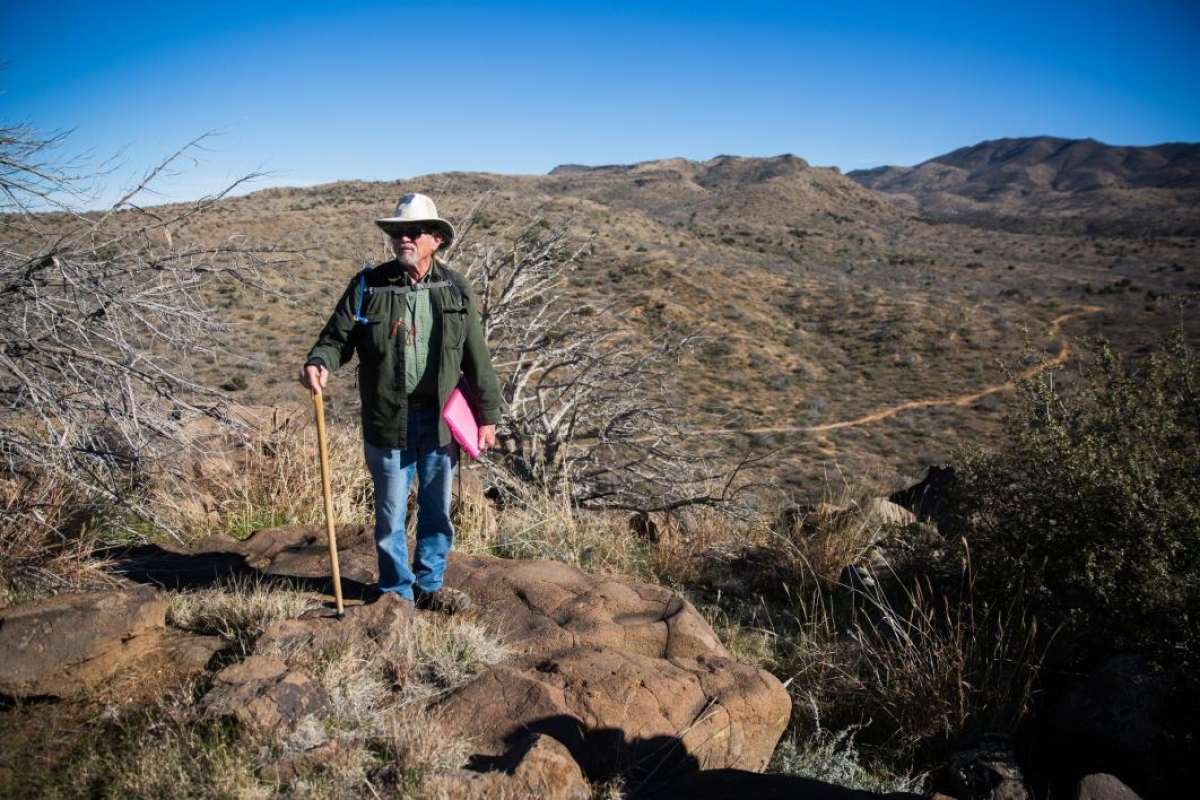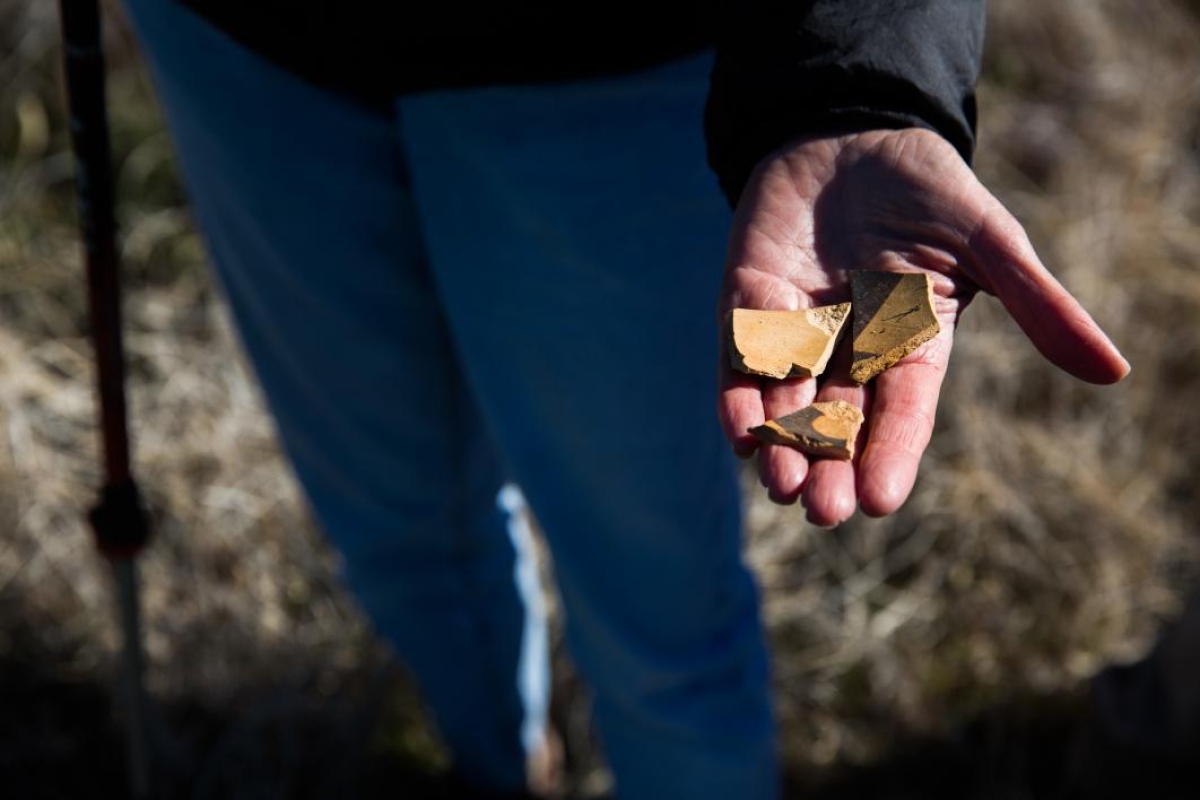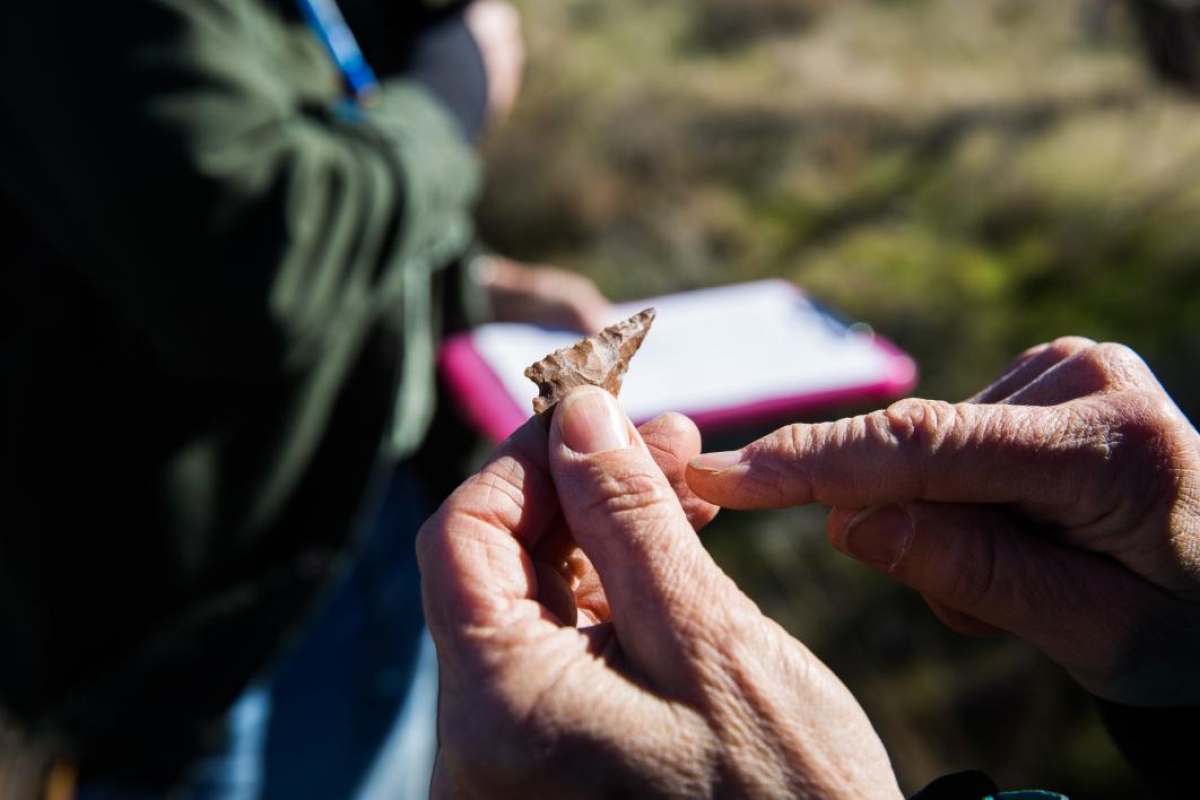“Sherd!”
That’s the sound 16 volunteers had their ears out for as they surveyed an area in Perry Mesa, 77 miles north of Phoenix, looking for prehistoric artifacts one cold December morning.
The volunteers, four of which are Arizona State University students, were to yell “sherd” whenever they found an artifact. The sherdsIn archaeology, a sherd, or more precisely, potsherd, is commonly a historic or prehistoric fragment of pottery. Occasionally, a piece of broken pottery may be referred to as a shard. While the spelling shard is generally reserved for referring to fragments of glass vessels the term does not exclude pottery fragments. Source: Wikipedia. will help piece together where a mysterious population, who once made this area their home, came from. It’s part of a five-year research project conducted by ASU and the Friends of Tonto National Forest.
ASU anthropology senior Sarah Garner said she found two pottery sherds that were bigger than her hand and at least a half-an-inch thick.
According to David Abbott, associate professor in ASU’s School of Human Evolution and Social Change, between 1,000 to 2,000 people lived in the area in the late 13th to early 14th centuries. Abbott, along with retired forest archaeologist Scott Wood, led the group of volunteersThose who want to volunteer, ASU student or not, can contact the Friends of the Tonto National Forest at friendsoftontonf@gmail.com..
Wood said this population seems to have come out of nowhere, and the project will help uncover why this population settled here and if there were others before them.
The group trained for the search at the Seven Springs area outside of Cave Creek. They moved up and down in lines while in pairs to cover the area and properly survey the land, while marking their path. Wood simply described the technique as “walking across the landscape and trying to find stuff.”
The volunteers were also briefed on the various artifacts they might find while transecting the area, such as Wingfield Red Pottery and Jeddito Yellow Ware. Both are significant because they are not native to the area, hence signifying trade. Also the age of found artifacts could contain clues to a civilization that may have settled the area prior to the 13th-century residents.
Over the next few years, ASU and the Friends of Tonto National Forest will work together to uncover more of Perry Mesa’s history.
Wood says one of the most satisfying parts of this project is that it brings a diverse group of people together: “It’s going to involve different kinds of people, different expertise and provide opportunities for people to come do something they’ve never done before.”
Learn more about some of the artifacts they found via the videos below.
Videos by Deanna Dent/ASU Now
More Arts, humanities and education

Honoring innovative practices, impact in the field of American Indian studies
American Indian Studies at Arizona State University will host a panel event to celebrate the release of “From the Skin,” a collection over three years in the making centering stories, theories and…

ASU alum's humanities background led to fulfilling job with the governor's office
As a student, Arizona State University alumna Sambo Dul was a triple major in Spanish, political science and economics. After graduating, she leveraged the skills she cultivated in college —…

ASU English professor directs new Native play 'Antíkoni'
Over the last three years, Madeline Sayet toured the United States to tell her story in the autobiographical solo-performance play “Where We Belong.” Now, the clinical associate professor in…
